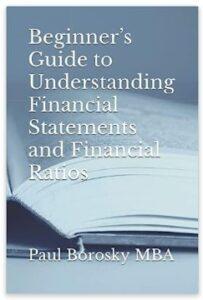How to Write an Assisted Living Business Plan
The assisted living industry's competitors have experienced moderate revenue growth over the past few years, driving the demand for assisted living business plans, business plan templates, and pro forma financial projections.
Several reasons contribute to the increased demand for assisted living facilities and business plans. Notably, more assisted living facilities have emerged by converting homes into subdivisions, enabling competitors to start businesses with minimal capital and shorter buildout times.
Regardless of the reasons behind the rising demand for assisted living business plans, it remains essential for business owners in this industry to have a strategic plan in place. Our assisted living business plan writer has developed valuable tips and tricks to assist business owners in crafting their own comprehensive business plans, templates, and pro forma financial projections (7/23).
CHECK OUT OUR ASSISTED LIVING BUSINESS PLAN TEMPLATE!!!
Executive Summary for an Assisted Living Business Plan.
The executive summary section of the assisted living business plan is a critical component that outlines the legal structure chosen for the organization. Standard options include non-profit, corporation, and limited liability companies, each offering unique benefits and challenges for an assisted living facility.

A non-profit business structure, for instance, presents advantages such as potential tax exemption on excess funds, allowing founders to avoid federal taxes. Additionally, it facilitates receiving donations from community members, ensuring a steady flow of revenues and supporting corporate social responsibility objectives through charitable contributions. However, there are limitations, as founders may receive salaries for their work but are ineligible to withdraw profits as dividends.
Choosing the appropriate legal structure is crucial, and it is recommended to seek legal advice to make an informed decision. Documenting this selection briefly in the executive summary allows stakeholders to understand the organization's legal framework and sets the foundation for a well-structured and successful assisted-living business plan.
Company Information for an Assisted Living Business Plan.
In the company information section of the assisted living business plan, critical characteristics of the organization should be highlighted. This includes essential details such as the company's name, location, and the specific types of services it provides. Additionally, providing a comprehensive overview of the amenities offered to residents is crucial.
Our assisted living business plan writer has identified popular amenities commonly provided by these facilities, such as engaging gardening activities, regular shopping trips, thoughtfully furnished rooms, and reliable Internet access. Some assisted living facilities even go the extra mile by offering transportation services for doctor visits and implementing state-of-the-art security measures.
By presenting a detailed account of the amenities and services in the company information section, potential investors and stakeholders understand the assisted living facility's offerings, its commitment to residents' well-being, and its unique value to the market.
Need Help Writing an Assisted Living Business Plan?
Call or Text Paul, Doctoral Candidate, MBA.
321-948-9588
Email: Paulb@QualityBusinessPlan.com
Hours of Operation: 7 Days a week, 8 am to 9 pm EST.
Our business plan writer is located in Orlando, FL.
CLICK HERE TO CONTACT US TODAY!!!
Product Description for an Assisted Living Business Plan.
The product description section of an assisted living business plan revolves around the unique services and amenities offered to residents. Assisted living facilities generate revenues by accommodating individuals at their locations, typically housing up to five or six residents, along with the assistance of a certified nursing assistant.
To provide potential investors and stakeholders with a comprehensive understanding of the services offered, the product description should emphasize the daily activities and care provided to residents. This may include personalized care plans, assistance with daily living activities, medication management, and specialized memory care programs for residents with cognitive impairments.
The product description should also highlight the amenities that enhance residents' quality of life and create a comfortable and engaging environment. Popular amenities may encompass engaging recreational activities, beautifully landscaped gardens, nutritious dining options, social events, transportation services, and state-of-the-art security measures.
By presenting a detailed product description, the assisted living business plan demonstrates its commitment to meeting the diverse needs of its residents, ensuring their well-being, and providing a supportive and enriching living experience.
Competitive Advantages for an Assisted Living Business Plan.

In the competitive advantages section of an assisted living business plan, new businesses need to identify specific attributes that set them apart in the highly competitive industry. With the significant growth in the assisted living sector due to the aging baby boomer population, creating distinct competitive advantages becomes even more crucial.
One common competitive advantage for assisted living facilities lies in offering transportation services. These facilities can effectively differentiate themselves from competitors by providing regular transportation to residents for shopping trips, doctor's appointments, or even outings to the beach. This added convenience enhances residents' quality of life, promotes social engagement, and provides independence that potential residents and their families highly value.
Other potential competitive advantages may include specialized care programs, innovative technology integration, comprehensive wellness programs, experienced and compassionate staff, and aesthetically appealing living spaces.
By highlighting these unique selling points in the competitive advantages section, the assisted living business plan showcases how the facility stands out among competitors, attracting potential residents and positioning the business for long-term success in the thriving assisted living market.
Location Description for an Assisted Living Business Plan
In the location description section of the assisted living business plan, careful consideration should be given to the interior layout and the facility's general location.
Internally, sufficient square footage is of utmost importance to accommodate the needs of residents and staff. Assisted living facilities typically house 5 to 6 individuals alongside a certified nurse, and additional space is necessary for amenities like porches, storage garages, a fully equipped kitchen, and ample bathrooms. A minimum of 2,500 to 3,000 square feet is recommended for the interior, although the business owner may opt for a smaller or larger space depending on the desired capacity.
Strategic placement near community amenities such as pools, malls, and healthcare centers can be advantageous regarding the general location. Proximity to these services enhances the quality of life for residents and provides convenient access to various activities and medical care. Additionally, situating the assisted living facility near residential subdivisions ensures visitors are near their loved ones, providing peace of mind in emergencies.
By addressing the size requirements and selecting an ideal location, the assisted living business plan demonstrates a thoughtful approach to meeting the needs of residents and creating an attractive and accessible environment for both residents and their families.
Target Market for an Assisted Living Business Plan.
The target market for an assisted living business plan extends beyond just the elderly; it also encompasses their loved ones or caregivers. By recognizing the importance of appealing to potential residents and their family members, assisted living facilities can design effective marketing strategies to attract their target audience. Engaging with and addressing the concerns of both parties will ultimately facilitate a smoother decision-making process for selecting the right assisted living facility.
Another valuable target market for assisted living businesses includes community and state governments. In certain situations, elderly or disabled individuals may become wards of the state, requiring facilities to care for them. By actively including state and local governments in their target market, assisted living businesses can broaden their reach to diverse potential residents while ensuring a steady cash flow from government agencies for the services provided.
By understanding and effectively targeting individuals in need of care and the governing bodies responsible for their welfare, the assisted living business plan can demonstrate its capacity to cater to a wide range of potential residents and stakeholders, positioning the facility for success in the growing market.
Industry Research for an Assisted Living Business Plan.

Researching the assisted living industry for the business plan reveals valuable insights despite the scarcity of reliable data due to its relatively new emergence. Assisted living facilities primarily compete within the nursing care facility industry, which boasts an impressive $145 billion annual revenue. Over the past five years, the nursing care industry has experienced steady growth, averaging about 2% annually. This growth rate will substantially increase to approximately 5% over the next five years.
Around 23,000 businesses are operating within the nursing care industry, encompassing assisted living facilities. However, this number is anticipated to grow substantially in the upcoming years. As the demand for assisted living services continues to rise due to an aging population and changing healthcare needs, opportunities for new entrants into the market are expected to expand significantly.
Despite the limited research available, the data points to a flourishing and dynamic industry, making it an attractive prospect for entrepreneurs looking to establish a successful assisted living business. By leveraging the projected growth and identifying ways to differentiate from competitors, the business plan can position the assisted living facility for long-term success in this evolving market.
Owner and Management Section of an Assisted Living Business Plan
An assisted living business plan's Owner and Management section is of utmost importance due to the unique requirements and responsibilities involved in running such a facility. As owners often need specialized education and licenses, including a detailed resume highlighting relevant educational achievements and skills that align with the assisted living industry is crucial. Emphasize any management expertise, as strong leadership is essential for success in this field.
To present a comprehensive overview of your qualifications, include a summarized version of your resume in the Owner and Management section. Highlight your critical skills, experience, and expertise that make you the ideal candidate to lead and manage the assisted living facility.
Additionally, it is advisable to include a more comprehensive version of your resume in the appendix section of the business plan. This allows potential investors or stakeholders to delve deeper into your background and qualifications, gaining confidence in your ability to own and manage the facility effectively.
By presenting a strong and well-structured Owner and Management section, you will demonstrate to readers that the facility is in capable hands, boosting their confidence in the viability and success of the assisted living business.
Funding Request for an Assisted Living Business Plan
The Funding Request section of an assisted living business plan plays a crucial role in presenting the financial requirements and justifying the need for external funding. Starting an assisted living business entails significant initial costs, including property acquisition, furnishing, and amenities development to attract potential customers. Typically, the starting cost for such a venture falls between $250,000 to $500,000.
Given the substantial investment required, seeking financial support from banks or investors becomes essential. A professionally prepared assisted living business plan is the cornerstone of the funding process. It provides a comprehensive and compelling business overview, including market analysis, competitive advantages, and financial projections, instilling confidence in potential investors or lenders.
In the Funding Request section, clearly outline the total amount needed to initiate the assisted living facility and break down the intended use of the funds. Detail how the investment will be allocated for property acquisition, facility setup, staffing, marketing, and other essential components.
By presenting a well-documented funding request supported by a comprehensive business plan, you will enhance your chances of securing the necessary financial support to launch and operate your assisted living business successfully.
Pro Forma Financials for an Assisted Living Business Plan.
The Financials section of an assisted living business plan is a critical component that provides a clear overview of the projected financial performance of the venture. To develop accurate financial projections, determine the monthly revenues the organization expects to generate. This can be calculated by multiplying the monthly fee for each resident by the number of residents the facility plans to accommodate.
Next, consider any additional revenue streams that the assisted living company may generate, such as transportation fees or charges for extra services like specialized meals. These supplementary revenues should be included in the financial model.
Once the total revenues are calculated, the financial model should align these revenues with the fixed costs of operating the facility. Fixed costs typically include rent or mortgage payments, utilities, maintenance, and staff salaries.
By meticulously accounting for all the revenues and expenses, the financial model will yield the monthly net income the assisted living facility generates. This net income figure provides valuable insights into the business's financial viability and profitability.
Additionally, the financial projections should extend beyond the monthly basis and include annual projections for the next five years. This comprehensive financial model will enable potential investors or lenders to assess the assisted living business's long-term sustainability and growth potential.
Incorporating realistic assumptions and conducting sensitivity analyses can further bolster the credibility of the financial projections, making them a vital tool for making informed decisions and securing funding for the assisted living business.
Hopefully, these insightful tips and tricks for writing a business plan were helpful. Email or call us if you need help with a business plan or financial projections.
Author: Paul Borosky, Doctoral Candidate, MBA., Author
Owner of: Quality Business Plan, Quality Business Consultant
Date: 7/23/23